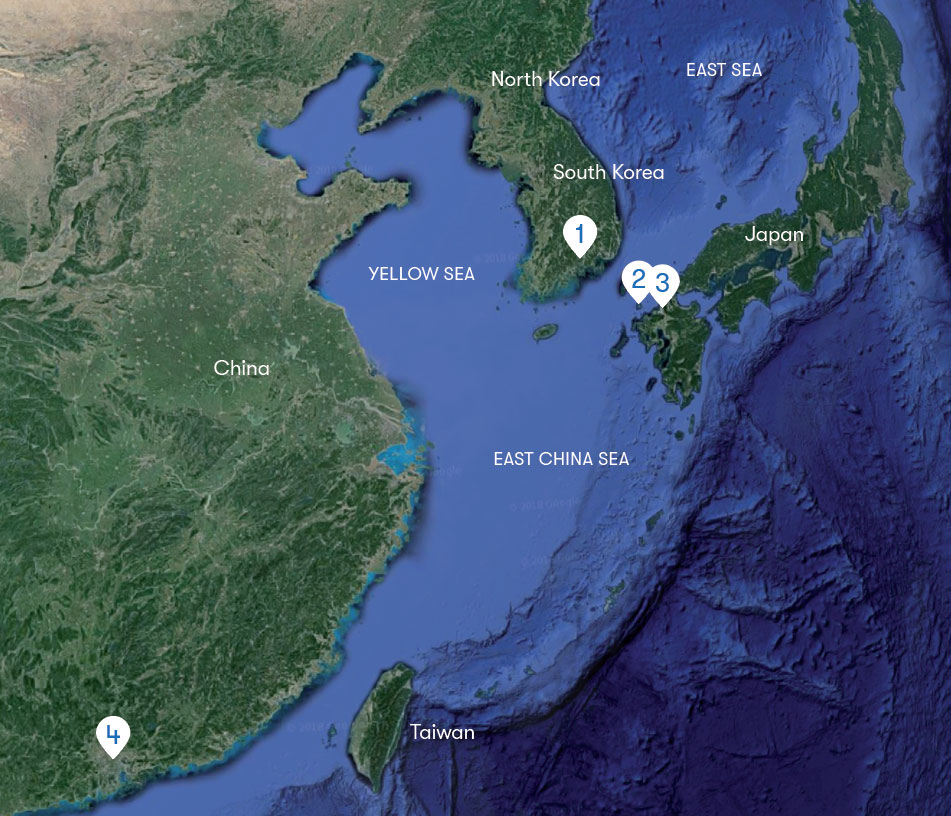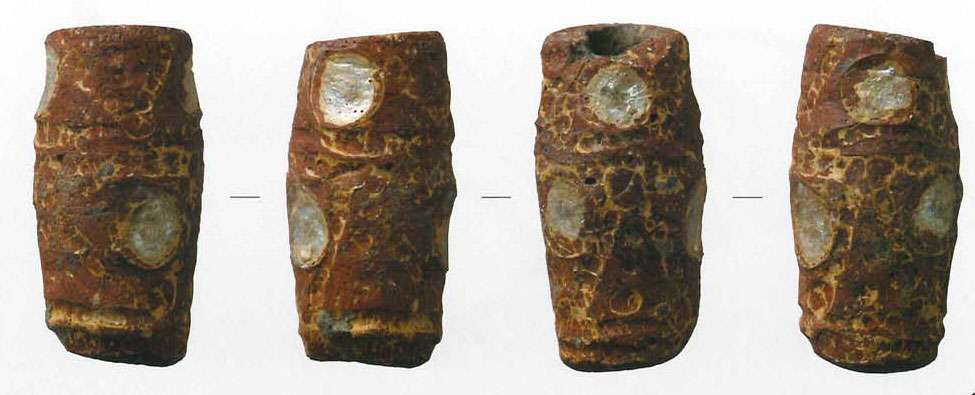Investigating Neukdo Island. An ancient hub of maritime interactions
An often overlooked yet key component of ancient maritime interactions in the Northeast Asia region is the coastal route that was established along the western and southern coastlines of the Korean Peninsula. This route played a key role in establishing links between the ancient communities of China, Korea, and Japan up until the seventh century CE. Due to treacherous tidal currents, the successful navigation of this coastal route would have depended upon an in-depth knowledge of these waters – knowledge that would have been accumulated through the input of seafarers from diverse regions. These seafarers would have met and exchanged information and goods at ‘hubs’ along this coastal route, one of which was located at Neukdo Island, at the southeastern tip of the Korean Peninsula.
Neukdo is a small island, covering an area of approximately 46ha, which was excavated between 1985 and 2003. Archeological investigations revealed that humans were present at the site from the Neolithic Period (6000-2000 BCE), but it is the material remains of approximately two centuries of occupation, extending from sometime in the second century BCE to the first century CE, that have been the subject of great scholarly interest, for this evidence reveals that the island functioned as a key trade port in the region.
A wide array of archaeological features have been revealed that can shed light on the nature of daily life at this bustling trade port, including round and square-shaped dwellings, structures built on piles that may have served as storage buildings, middens, and burial grounds. Evidence of harbor infrastructure has yet to be identified, but the discovery of an ancient stone anchor points towards the possibility of future findings. The presence of iron slags and fragments from furnace walls and tuyères, whale spine bones that appear to have been used as turntables for ceramic vessel forming, and numerous spindle whorls indicate that various forms of crafts production also took place at Neukdo. However, the most important activity on the island was trade, as is evidenced by the discovery of Chinese coins (Banliangqian and Wushu), a variety of stone weights, and an inkstone and knife which were used to keep records.
The goods that were traded at Neukdo attest to the international nature of this port. Artifacts that have been found include sword pommel pieces, bronze arrowheads, bronze mirror fragments, and various types of Chinese pottery that came from the Lelang Commandery or Han China; Japanese Yayoi pottery; and glass beads and cowrie shells that likely originated in Southeast Asia. A diverse range of people may have resided at this port, as is evidenced by the material remains of their foreign practices. For example, Yayoi pottery unearthed at the site comprises not only storage vessels but also ritual vessels, and a ritual clay figurine and miniature clay mask similar to examples from the contemporaneous Japanese trade port at Harunotsuji were discovered. This seems to indicate that a series of Japanese ritual practices had been carried out by Japanese inhabitants at Neukdo.
In addition, the burial grounds of Neukdo have yielded evidence of widely differing burial postures and burial structures. One of the most interesting burials to have been discovered at Neukdo, but which has yet to be formally published, comes from the Area C burial ground. It is said that the deceased was buried facing the ground, which is an atypical burial position not identified in prehistoric contexts on the Korean Peninsula. Another set of interesting burials comes from the Area A burial ground (No. 92-1 & 95), in which a single cowrie shell had been placed upon the chest of the deceased (with the absence of a hole indicating that it was not worn as a necklace) who had been buried within a double-jar coffin. As the placement of cowrie shells as grave goods has not been observed on the Korean Peninsula, these burials and the Area C atypical burial indicate that the dead buried in the Neukdo burial grounds may have been multi-cultural in nature.
Finally, some of the Neukdo roundhouses were found to have been furnished with indoor heating facilities, made in the style first used by the people of the Russian Primorye region around this time, and the technology gradually spread southwards. Strangely enough, in southern Korea, it is at Neukdo that these facilities first appear. Such houses with indoor heating facilities therefore seem to indicate the presence and influence of people from the Russian Primorye region on the island.
The above strands of evidence make it possible to suggest that, from the second century BCE to around the first century CE, Neukdo may have been home to individuals from various regions of East Asia who resided at this trade port whilst maintaining their own cultural practices. As an international port where seafarers from various regions could meet and possibly share their diverse experiences, Neukdo was an international hub where not only goods but also knowledge, ideas, practices could be shared, thereby contributing to the foundations of a common maritime interaction network in ancient times.
Ilhong Ko, Research Fellow, Seoul National University Asia Center, mahari95@snu.ac.kr

